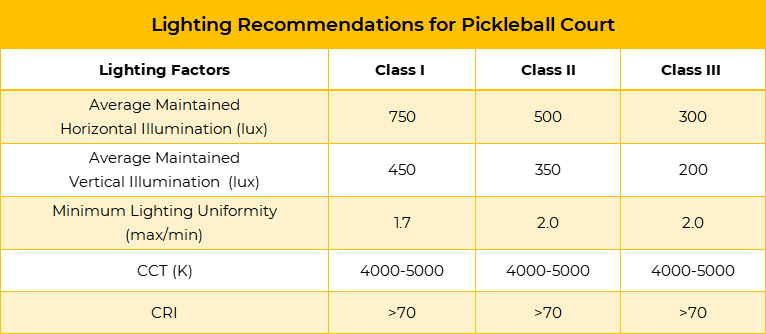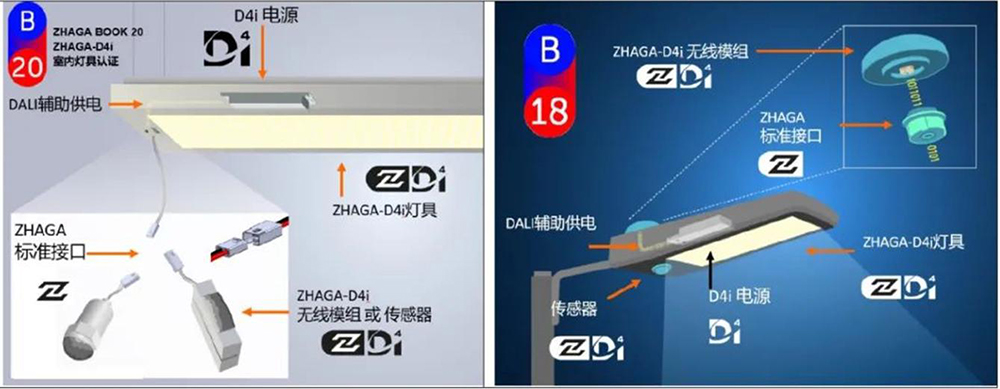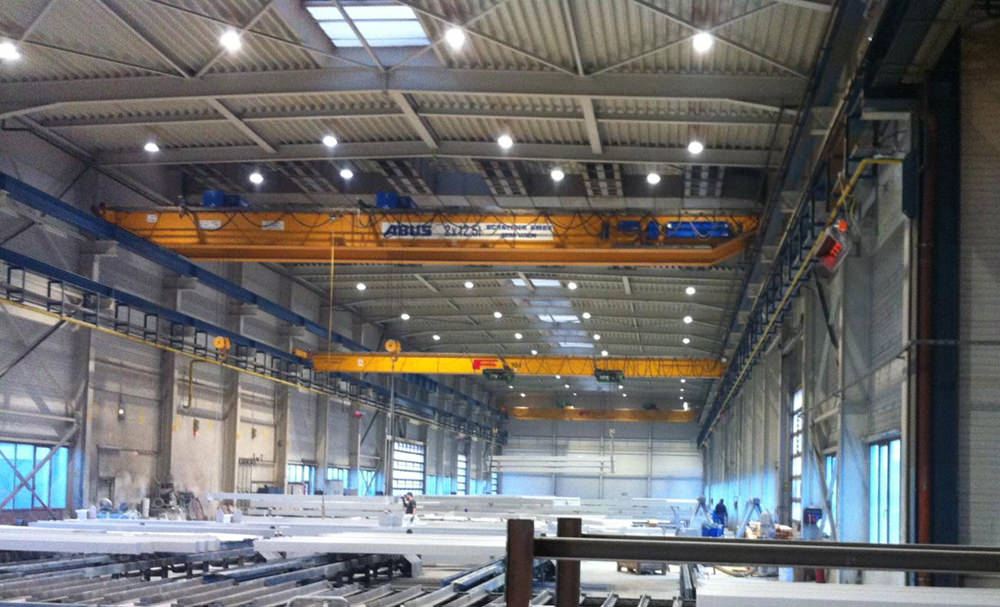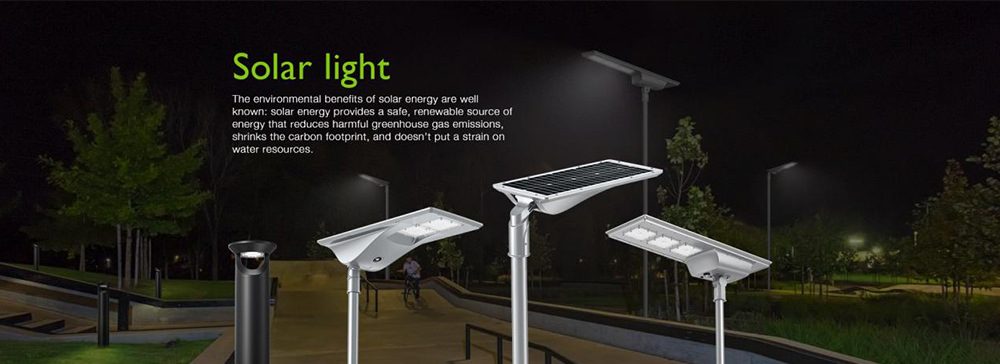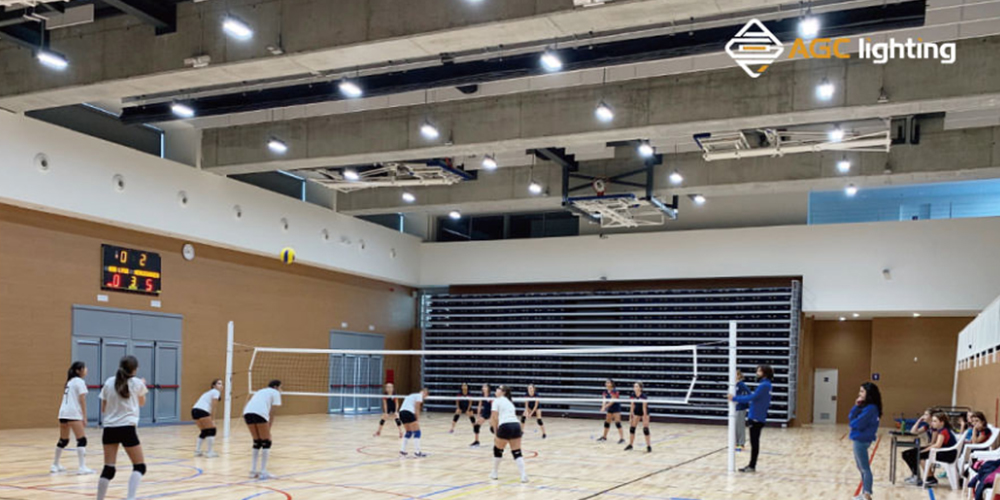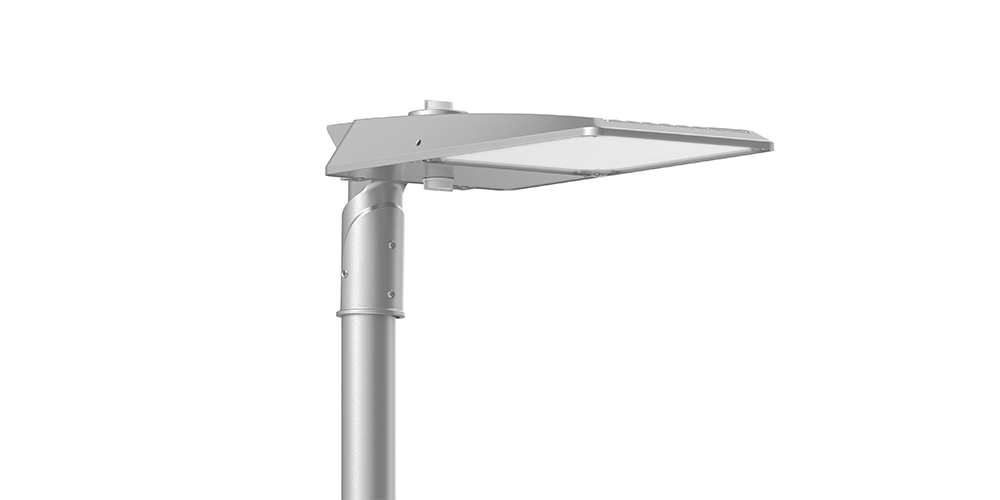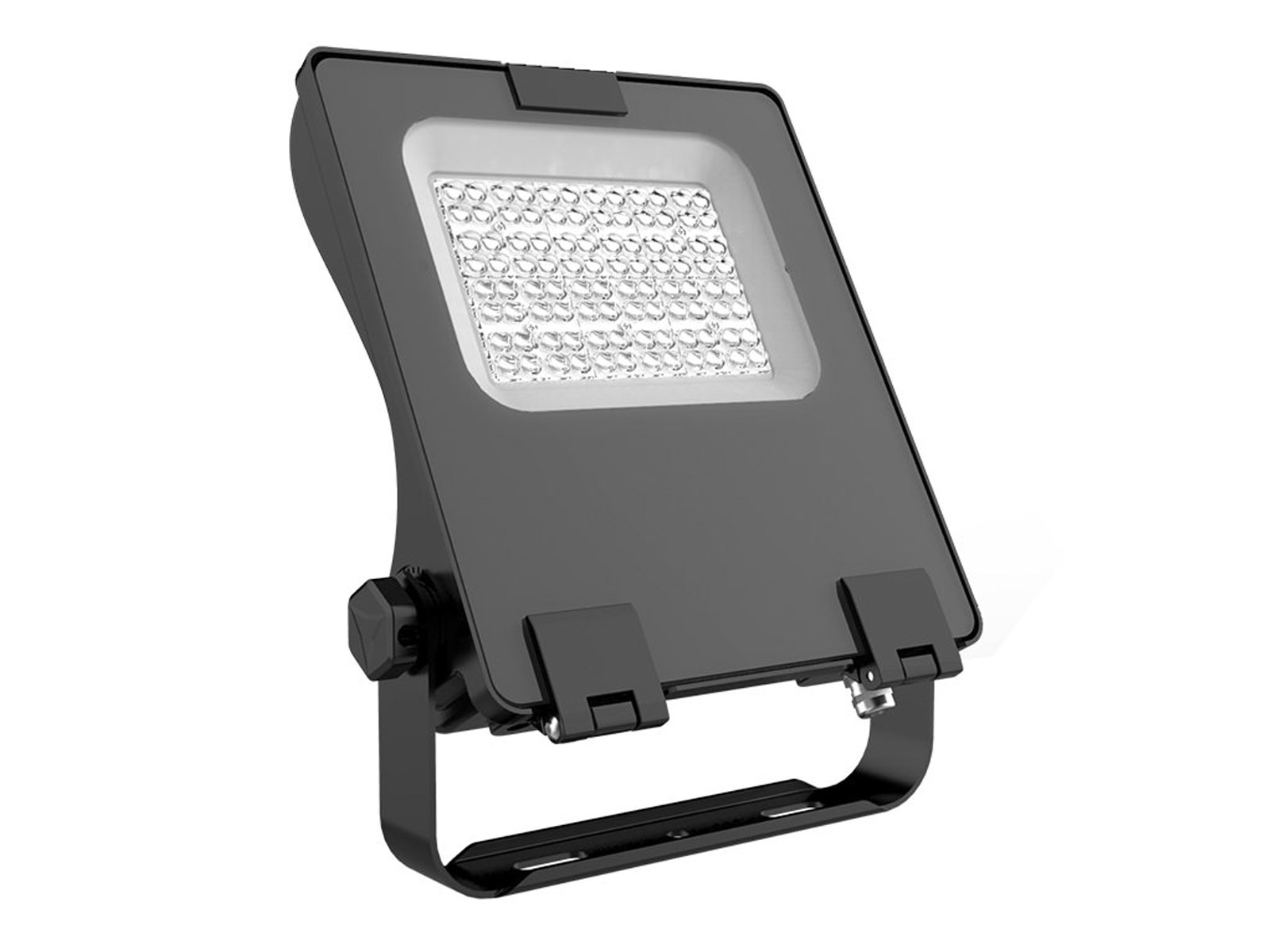Nowadays, pickleball is becoming more and more popular. It used to be a children’s backyard game and now, it is attractive to people of all ages. pickleball is a combination of tennis, table tennis, and badminton. The dimensions and layout of pickleball court are similar to badminton court while the rules are close to tennis court. Paddles of pickleball share features of table tennis, which are solid and made of wood generally. Since pickleball is one of most fasting growing sports, many people enjoy the game after hard work or study at night. Therefore, qualified pickleball court lighting is vital. This post would like to talk about the lighting requirements of pickleball court.
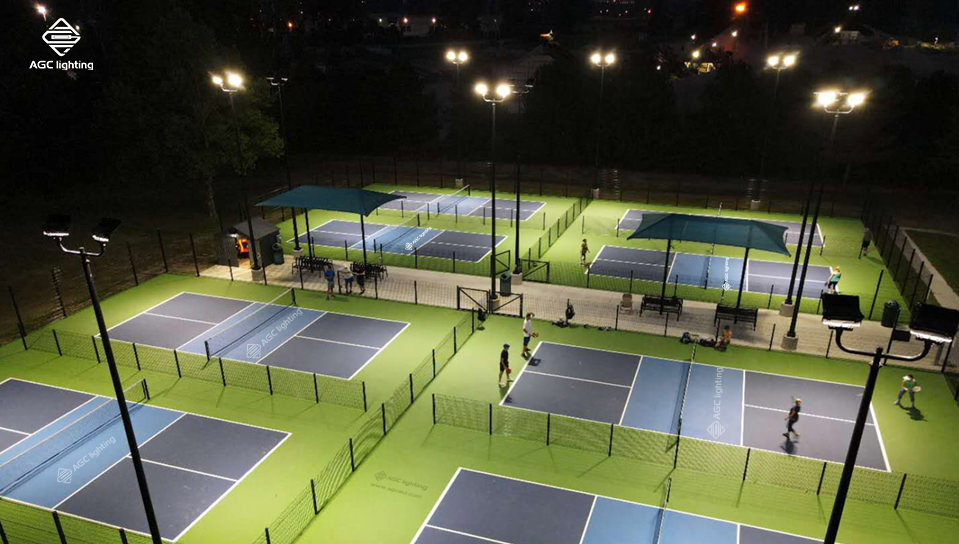
Sufficient Light
Wherever the illuminated place is, the basic lighting requirement is ‘safety first’. it means there should be sufficient light for the place. However, ‘sufficient light’ is varied from the competition levels of pickleball court. There are three competition levels of pickle-ball, Class I, Class II, and Class III. Introductions and recommended illuminations are as followed:
Class I
Class I refers to processional pickleball matches, which have highest requirements of illumination. A large number of spectators may watch the game from a long distance in this class. It may also be broadcast at the same time. A lighting of 750 lux average maintained horizontal illumination with 450 lux average maintained vertical illumination is adapted for such class.
Class II
Class II includes club competitions. A medium size spectators watch a game from medium viewing distance. 500 lux average maintained horizontal illumination and 350 lux average maintained vertical illumination are proper for club competitions.
Class III
Class III means the recreational pickle-ball. General training and school sports (physical education) are also included in this class. However, there are nearly no spectators in low-level competitions generally. A lighting with 300 lux average maintained horizontal illumination and 200 lux average maintained vertical illumination is adequate.
Clear Visibility
Even lighting distribution
The standard size of pickleball court is 20 feet by 44 feet for single and 30 feet by 60 or 30 feet by 64 feet for doubles. LED fixtures should be mounted on about 20 feet high poles. This mounted height is aimed to ensure the clear visibility of players even when the ball rises to high arc. The uneven lighting distribution will cause the blurred vision and invisible ball as sudden over bright or dark lighting.
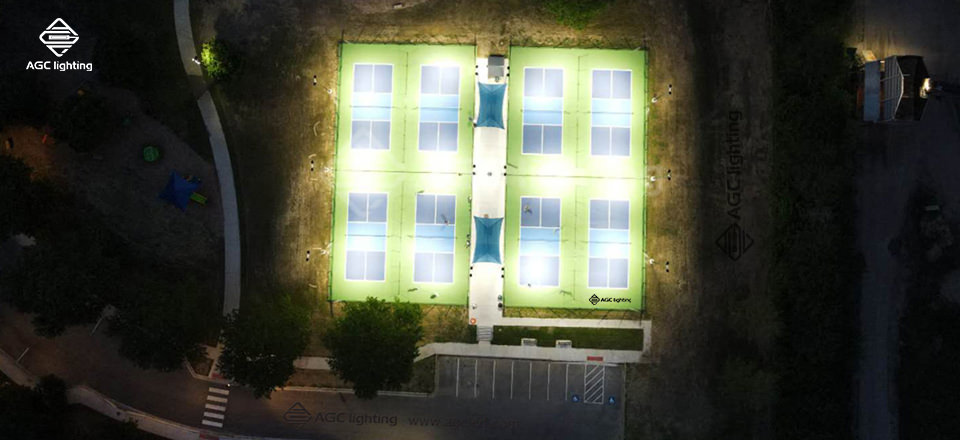
CCT
CCT (Correlated Color Temperature) refers to the color of the light source. It is also described as warm white, cool white or natural white in common. CCT ranged from 4000K to 5000K is recommended for pickleball court. But CCT higher than 5000K will display bluish color. Thus, avoid the LED fixtures with CCT over 5000K.
CRI
CRI (Color Rendering Index) is the ability to reflect the true color of the item. The closer the color rendering index is to 100, the more natural the color of product will appear. Lighting with high CRI can not only promote accuracy for player to judge the track of flying ball, the location of themselves and the surrounding environment , but also offers a clearer vision for spectators. CRI above 70 is recommended for pickleball court.
Comfortable Visual Experience
Avoid glare and flicker
Visual comfort is relevant to glare and flicker. Glare is one of the most important factor in evaluating the quality of lighting, which is related to the installation method of the fixtures, the installation height, the number of fixtures and the lighting distribution, etc. Flicker can lead to hazy vision in players. When observing the movement of the pickle-ball, players may see a relatively blurred shadow in low resolution.
Lighting uniformity
The uniform lighting distribution is critical to comfortable visual experience. Otherwise, nonuniform lighting may cause false visual phenomena. Lighting uniformity (max/min) of Class I pickleball court should be 1.7 or less. Minimum lighting uniformity of Class II and Class III pickleball court is 2.0.
Resistance to Harsh Environment
Outdoor and indoor, pickleball court lighting is supposed to withstand the harsh environment, including impact, water, sunlight, extreme temperature, etc. The resistances to harsh environment depend on the materials and protection rating of fixtures. LED fixtures equipped with tempered glass provide double protection of both players and fixtures. If the fixtures are hit by the ball, they can still keep safety with the tempered glass. Related protection rating includes IK and IP rating. IK code numbers represent anti-collision energy value. IP value means the dust-proof capacity and the ability to withstand high pressure and steam cleaning. The higher IP rate of the fixtures, the better the effect of dust and water resistance. IK08 and IP66 are the common ratings of picklebal court fixtures.
In conclusion, recommendations that being able to meet the lighting requirements of pickleball court are as followed:
